Research Article - (2022) Volume 10, Issue 7
Development and Optimization of RP-HPLC Method for analysis of 5-FU in Human and Rabbit Plasma Samples: Identification and Quantification
Aisha Sethi1*,
Mahmood Ahmad1,
Imitaz Ahmad1 and
Sabra Sultana2
1Department of Pharmacy, The Islamia University of Bahawalpur, Punjab, Pakistan
2Department of Pharmaceutical Sciences, Government College University, Faisalabad, Punjab, Pakistan
*Correspondence:
Aisha Sethi, Department of Pharmacy, The Islamia University of Bahawalpur, Punjab,
Pakistan,
Email:
Received: 16-Mar-2022, Manuscript No. IPAAD-22-12724;
Editor assigned: 18-Mar-2022, Pre QC No. IPAAD-22-12724(PQ);
Reviewed: 01-Apr-2022, QC No. IPAAD-22-12724;
Revised: 10-Oct-2022, Manuscript No. IPAAD-22-12724(R);
Published:
17-Oct-2022, DOI: 10.36648/2321-547X.10.7.31
Abstract
In vitro and in vivo experiments revealed that drug loaded cross linked chitosan nanoparticles showed; a sustained release profile of 5-fluorouracil compared to the oral solution of 5-FU due to which Area Under Curve (AUC) was increased two times more folds, as promising site specific targeted site of 5-FU to the colon. A simple, accurate, precise, cost effective and sensitive Reversed Phase HPLC (RP-HPLC) method has been developed and validated then, for determination of 5-FU in human and rabbit plasmas. The current RP-HPLC chromatography system is an isocratic of Agilent technologies series 1200 consisted of a pump and variables. Data processing software chem station used with a Wave Length Detector (WLD) for assay of prepared plasma samples. Mobile phase composition was i.e. acetonitrile: water (10:90) at pH 6 and 1.0 mL/min flow rate for 3-4 minutes (retention time). 5-Fluorouracil was detected using a Waters 2996 photodiode array detector at a 260 nm wavelength. The calibration curve was linear over the concentration range of 2-100 ng/ml. This method was specific and co-relation coefficient (r2) is less than or equal to 0.998. It is concluded that reproducible method may be employed for the analysis of 5-Fluorouracil (5-FU) is a broad spectrum anticancer and it is widely used in the treatment of various types of solid cancers. But due to its narrow therapeutic window, plasma concentration is very essential to determine at clinical setups, pharmacokinetic parameters, in rabbit and human plasma samples as well as nanoparticles formulations.
Keywords
RP-HPLC; Limit of Detection (LOD); Limit of Quantification (LOQ); Quantity Concentration (QC)
Introduction
Chemotherapy is considered as a part of treatment in
conventional therapy during some stages of cancer and
frequently, it is used to administer again after surgery as
adjuvant chemotherapy [1,2]. 5-Fluorouracil (5-FU) was found to be used among the basic chemotherapeutic agents. 5-
Fluorouracil (5-FU), an anticancer, introduced in 1958, higher
therapeutic efficacy have produced in solid types tumors like
colon, rectum and breast cancers [3,4]. Its oral conventional
brand is showed erratic absorption through GIT. As it shows
rapid gastrointestinal absorption, after oral administration its yielding peak blood levels between 15 to 60 minutes [5,6].
Additionally, 5-FU has nonspecific toxicity in normal healthy
cells, speedy renal clearance as well as metabolism by
Dihydro-Pyrimidine Dehydrogenase (DPD) enzyme and high
digestive distress inhibits it application in management of
cancer. 80% orally administered 5-FU, has reported to
metabolize in liver and kidney [7,8]. It has detoxified and
excreted as F-ß-alanine by urine. However due to high rate of
metabolism in blood, it has shorter half-life also (8-20 min).
Intravenous administration of 5-FU for solid types of cancers,
demonstrates severe cytotoxic effects by a huge number of
previous studies in the literature. As IV administration of 5-FU
linked with disturbed microbial flora of GIT track so,
accurately designed oral formulations of 5-FU using different
biocompatible, biodegradable, smart pH sensitive
polysaccharides have employed for sustained, controlled
delivery of therapeutic agent i.e. depending upon selection of
polymer and networking pattern on tumor cells by most of
researchers in the literature as well. Cross linking can also
influence drug loading and entrapment efficiency from NPs
which affect therapeutic diffusion and tunable physiochemical
properties of Nano carrier or nanoparticles facilitate sustained
or controlled release of drug on targeted site of tumor
without harming to the other body tissues [9,10]. Reversed
Phase High Performance Liquid Chromatography (RP-HPLC) is
most common chromatographic method that has been used
for pharmacokinetic analysis. Less expensive and commonly
available method could facilitate in terms of expense and time
in analysis but other process parameters could not be missed
in success of easy and inexpensive analysis [11,12]. There are
several procedure parameters in relevance to each technique,
like complex composition of mobile phase, long run time and
particularly sample preparation (extraction of drug from
biological fluid) can even make the HPLC analysis more
complex. Previous studies have reported simple eluent but
extraction process remained an important step to be studied
for improvement fast and involvement of fewer solvents. 5-
Flourouracil (5-FU) a pyrimidine analogue is widely used in
various solid types of cancers particularly including head and
neck, colorectal, and breast cancers. Several analytical
procedures have been reported to quantify 5-FU in biological,
intestinal and mucosal fluids. 5-FU assay has been developed
using normal phase HPLC, reversed phase HPLC
Pharmacokinetics of 5-FU has been reported previously.
Pharmacokinetic variability is main reason for inter patient
plasma drug concentration. This instability in the drug
concentration even after administration of same dose under
the same conditions enforces individualization of dose in
patients. Simple and rapid detection of 5-FU with accuracy
and precision become an important issue in its therapy. 5-FU
has been administered mostly by bolus or continuous infusion
or by combination of both for several days [13,14]. This
currently used route of administration need plasma
concentration analysis. Research studies are also being
conducted for oral delivery of this anticancer drug to avoid
the excessive adverse effects especially in the gastrointestinal
tract cancers. This novel oral drug delivery system must be
evaluated on animals first and then on humans [15]. This
study main focus was to develop and validate reversed phase High Performance Liquid Chromatography (HPLC) method
using mobile phase having simple composition and fast
samples preparation procedure. The method has been
developed in both human and rabbit’s plasmas. The studied
method could applied in Therapeutic Drug Monitoring (TDM),
pharmacokinetic studies and evaluation of new oral dosage
forms of 5-FU in humans as well as in other animals.
Materials and Methods
Chemicals and Reagents
5-FU powder was received as a kind gift from Paramedic
Laboratories (Pvt.) Ltd. Pakistan. Perchloric acid was
purchased from Sigma Aldrich. HPLC grade water was
prepared in our pharmaceutical technology laboratory.
Human blood plasma sample was obtained from civil hospital,
Bahawalpur. Rabbit plasma was obtained from animal house
of our pharmacy department the Islamia university of
Bahawalpur, Pakistan.
Chromatographic Requirements
The separation was carried out at 25°C (room temperature)
on ODS hypersil C18 column having 4.6 mm x 250 mm,
particle size of 5 μ (thermo electron, USA). HPLC
chromatography system an isocratic of Agilent technologies
series 1200 consisted of a pump and variables. Data
processing software chemstation used with a wave length
detector (VWD) for assay of prepared plasma samples. Mobile
phase composition was i.e. acetonitrile: water (10:90) at pH 6
as well as 1.0 mL/min flow rate for 3-4 minutes (retention
time). 5-Fluorouracil was detected using a Waters 2996
photodiode array detector at a 260 nm wavelength. This
method was specific and co relation coefficient (r2) is less
than or equal to 0.998. Degassing of mobile phase by
sonication (Elma D-78224 Singe/Htw, Germany), vacuum
filtration via 0.45 μm Millipore filters papers (Merck,
Germany). Injection of mobile phase as well as its flow rate
was maintained at 1 ml/min and 10 μl of prepared plasma
sample was injected and then elate was monitored at 260 nm
wave length by Agilent VWD (Agilent Technologies, USA).
Stock Solution Preparation
5-Fluorouracil primary stock solution of (1000 ng/ml) was
prepared at room temperature by dissolving 1 mg of pure 5-
Fluorouracil in 1000 ml of Deionized Distilled (DD) water. Form
this primary stock solution standard solutions of
100,50,40,30, 20, 10, 5,4,3 and 2 ng/ml were prepared by
serial dilutions. Before construction of calibration curve these
dilutions were normalized to room temperature.
Animal Plasma Sample
Rabbit drug free plasma sample was obtained from animal
house of the faculty of pharmacy and alternative medicine,
the Islamia university of Bahawalpur. Pakistan. It was then
stored at -70°C and used before HPLC method development
and validation. Study was performed with prior approval of Pharmacy and Research Ethics Committee (PREC), the Islamia
University of Bahawalpur, Pakistan.
Spiked Plasma and Preparation
For spiking of rabbit plasma drug free sample, was mixed with
a proper quantity of standard working dilutions i.e., 100,50,40,30,20,10,5,4,3, and 2 ng/ml of 5-FU. Serial dilutions
were prepared by putting 50 μl of standard dilutions as wel as
50 μl of drug free plasma sample as well as 500 μl of 10% v/v
perchloric acid and then for 10 minutes vortexes it on a vortex
mixer. Perchloric acid as protein precipitating agent was
added for precipitation of plasma proteins present into this
mixture. Centrifugation of precipitated samples was
performed on centrifuge machine by EBA-20, Hettich-
Germany at 3500 rpm for 15 minutes. Then with the help of
with micropipette, supernatant layer was removed in clean as
wel as a dried labeled amber glass vials. This extract of drug
solution (20 μl) was directly injected into HPLC system and
then in the similar way, intra day (one day b/w batch) and
inter day (six consecutive days) spiked plasma samples were
prepared.
Standard Calibration Curve and Calculations
Eleven points 2-100 mg/ml in rabbit plasma was used for
preparation and validation of analytical method. Firstly drug
solutions were injected for identification of drug peak and
rabbit plasma samples were analyzed. To confirm accuracy
and precision, each step was repeated and each calibration
curve was constructed in triplicate. For identification of
interfering peaks blank plasma samples (without drug) were
used.
Estimation of Recovery and Matrix Effect
Evaluation of 5-Fluorouracil recovery from human and rabbit
plasma samples has been done by comparison and matrix
effect. Relative % age recovery of 5-Fluorouracil from human
and rabbit plasma samples were assessed by comparing
measured concentration (extracted samples of both plasma
samples) with spiking levels. Absolute matrix effect on 5-
Fluorouracil in plasma of human and rabbit was calculated by
peak area of extracted samples with corresponding peak area
obtained at the same concentration from direct injection of
aqueous spiked solution. It was noted that difference in
plasma compositions of human as well as rabbit plasma
affected differently.
Results
Method Validation
Limit of Detection (LOD) and Limit of Quanti ication (LOQ):
According to International Conference on Harmonization (ICH), Limit of Detection (LOD), in an analytical method is least concentration of the analyte present in sample which can be detected but not quantified as an exact value. While limit of quantification (LOQ) in an analytical process is minimum quantity of analyte present in given sample which can be determined quantitatively with suitable accuracy and precision?
Analysis Time
It determines total run time or total analysis time, i.e. indirectly effect on consumption of chemicals or solvents and overall cost of analytical method. For a standard analytical procedure run time 5-10 minutes was considered optimum but it may change from analyte to analyte. Optimization of proposed method was 10 minutes as total run time of analysis. Additional decreasing in run time compromised precision and accuracy of this method [16,17].
Linearity
Linearity is directly proportional to the concentration of analyte in sample. It was proposed method by analyzing all concentration ranges as mentioned above and repeatedly injected (n=3). Peak areas were plotted against estimated drug concentrations and time. Calculation of correlation coefficient, slope and intercept parameters was performed by least squares linear regression analysis [18-20].
Evaluation of Accuracy and Precision
According to ISO/IEC accuracy is defined as “closeness of agreement between a true quantity value and measured quantity value of an analyte”. It is the qualitative measurement that cannot be shown as a numerical value. Quality control sample concentration data for intra as well as inter day precision and accuracy were estimated by analyzing three to six different QC samples. Intra day (within batch precision or % repeatability and accuracy were calculated by analyzing six replicates of QC samples on same day, while inter day (one day b/w batch precision and accuracy)were evaluated by assessing each sample on six different days. Relative Standard Deviation (RSD) was calculation to evaluations of precision and accuracy within acceptable limits and it must be equal to or lower than 15 %.
Selectivity
5-Fluorouracil resolution peak was assessed from interfering peaks of plasma proteins and other components of mobile phase as these components used to get maximum resolution of analyte. Various protein precipitants, pH stabilizers were processed with plasma samples and resolution greater than 2 was proposed for this method.
Robustness
To investigate effect on separation of 5-Flurouracil, HPLC chromatographic conditions were consciously changed i.e. flow rate was altered by 0.2 units (1.0 ± 0.2). PH effect was observed by changing 0.5 units from 3.2 real pH values. Column age effect was also assessed by keeping other conditions constant and comparing of fresh column responses with that of 1 to 3 months old column.
5-Fluorouracil Stability in Rabbit Plasma
It was estimated by analyzing the replicates (n=6) of four dilution levels in rabbit plasma. Degradation effect in biological fluids by quality freeze thaw hours (0 hours, 2 hours, 4 hours and 6 hours) was analyzed as well as all plasma samples. To protect them from photo oxidation they were stored at -20°C and the thawed at room temperature in dark.
System Suitability
Parameters like Theoretical plates (Tp), Asymmetry factor (As), Capacity factor (K), Resolution (Rs), Retention Time (RT) and Tailing Factor (Tf) were reported in European pharmacopoeia as well as calculated by LC solution software. HPLC system was equilibrated with initial mobile phase composition and then followed by six injections of the same standard.
Optimization of HPLC Method
The HPLC analytical method development is a multistep process to ascertain the final chromatographic conditions as illustrated in Tables 1-3. During method development following conditions of mobile phases and stationary phases were selected and optimized as per ICH guidelines.
| Mobile phases |
Proportion |
pH |
Peak symmetry |
| Methanol: Water |
50:50:00 |
4.2 |
Peak spiting |
| Water: Methanol |
40 : 65 |
5 |
Peak broader |
| Methanol: Water |
60:40:00 |
6 |
Broader peak |
| Methanol: Water |
40 : 60 |
6.5 |
Splitting |
| Acetonitrile: 0.05 M Na2HPO4 buffer |
50:50:00 |
7 |
Dissociated peaks |
| Acetonitrile: Water |
90:10:00 |
6.5 |
Sharp peak low resolution |
| Acetonitrile: Water |
70:30:00 |
7 |
Dissociated overlapping peak |
| Acetonitrile: Water* |
0.479167 |
6 |
Sharp peak good resolution |
| Acetonitile: 0.01 M Na2HPO4: 5 Mm |
60:40:00 |
6.5 |
Sharp peak low resolution high retention time |
| Methanol: Acetonitile |
50:50:00 |
6.5 |
Sharp peak low resolution and tailing |
| Acetonitle: Methanol |
40:60 |
6.5 |
Sharp peak with tailing |
| Acetonitle: Methanol |
60:40:00 |
6.5 |
Sharp peak with low resolution to plasma peak |
Note: *selected mobile phase for the analysis.
Table 1: Mobile phases used during HPLC method development.
Conc
(mg. ml-1) |
Area
(m.Au) |
| |
|
| 100 |
305.374 |
| 50 |
143.893 |
| 40 |
120.114 |
| 30 |
90.553 |
| 20 |
70.114 |
| 10 |
48.754 |
| 5 |
35.346 |
| 4 |
28.901 |
| 3 |
20.023 |
| 2 |
15 |
Table 2: 5-Fluorouracil linearity in human plasma and its LOD and LOQ through standard deviation method.
Conc.
(mg/ml) |
Area
(m.Au) |
| 100 |
312.11 |
| 50 |
155.102 |
| 40 |
115.664 |
| 30 |
95.513 |
| 20 |
65.869 |
| 10 |
51.773 |
| 5 |
38.885 |
| 4 |
24.77 |
| 3 |
17.023 |
| 2 |
13.551 |
Tablet 3: 5-Fluorouracil linearity in rabbit plasma and its LOD and LOQ through standard deviation method.
Selection of Stationary Phase of HPLC Method
According to USP approximately 78 different types of stationary phases are available in the market. The column selection is dependent on the nature and type of analyte. ODS column with dimensions 250 mm x 4.6 mm, the particle size of 5 μm selected for our analytical purpose.
Selection of Optimized Mobile Phase (MP) of HPLC Method
Optimization of Mobile Phase (MP) of HPLC is an essential variable. The interaction between the mobile phase and the stationary phase directly affects the elution of the analyse concerning symmetry and retention time.
Retention Time
The short retention time (3.5 min to 4.3) was noted due to the hydrophobicity of 5-FU as the hydrophilic mobile phase reduces the affinity of the analyte for the column. Due to the presence of a high amount of water content poor peak symmetry was observed for 5-FU. The addition of acetonitrile in the aqueous phase at pH 6.0 resulted in an improvement in peak symmetry. Therefore, different proportions of acetonitrile and water were tested in isocratic mode ranging from 10:90 (v/v) to 70:30 (v/v). A broad and tailed peak of 5- FU was observed when the ratio of water is low than acetonitrile in the mobile phase. When the water and acetonitrile were present in proportion 10:90 respectively then peak for 5-FU peak was observed between 4.3 to 4.5 min retention times.
Method Validation
Linearity and range: Good linearity was observed for both human and rabbit plasma (2-100 ng.ml-1) such as r2 ≥ 0.998 and r ≥ 0.998 respectively (Figures 1 and 2).
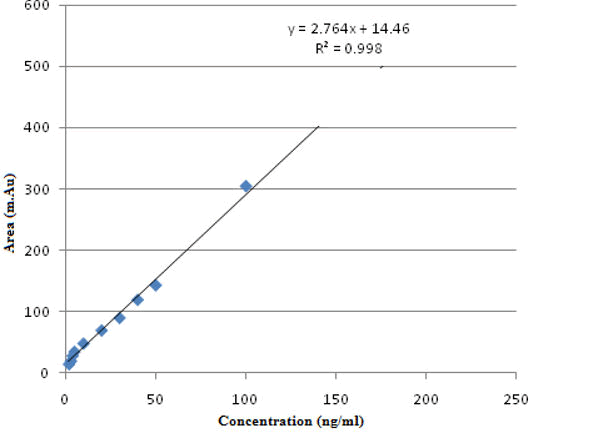
Figure 1: The linearity of the calibration curve in human plasma.
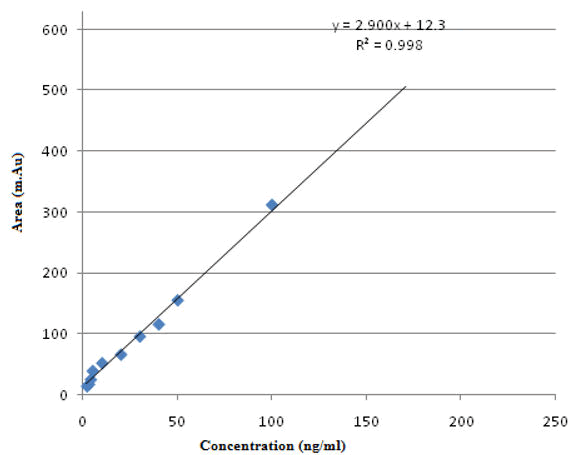
Figure 2: The linearity of the calibration curve in rabbit plasma.
LOD and LOQ
LOD and LOQ values were calculated through the regression equation using the data analysis tool excel 2016 as per ICH guidelines. LOD for human spiked plasma for 5-Fluorouracil calculated as 3.358 ng.ml-1 and LOD value for rabbit spiked plasma for 5-Fluorouracil calculated as 3.450 ng.ml-1. LOQ of 5-Fluorouracil in human spiked plasma was determined as 10.176 ng.ml-1 and LOQ of 5-Fluorouracil in rabbit spiked plasma was calculated as 10.454 ng.ml-1.
Accuracy and Precision
Intra day and inter day, precision and accuracy for the reverse micelle method were shown in Tables 4-6. The intraday percent coefficient of variance in human spiked plasma for Low Quantity Concentration (LQC), Medium Quantity Concentration (MQC), and high quantity concentration was calculated as 0.685, 1.0144 and 0.4377%, respectively, and the inter day percent coefficient of variance in human spiked plasma for Low Quantity Concentration (LQC), Medium Quantity Concentration (MQC) and High quantity concentration was calculated as 1.560, 1.11 and 1.29% respectively. The intraday percent coefficient of variance in rabbit spiked plasma for Low Quantity Concentration (LQC), Medium Quantity Concentration (MQC), and high quantity concentration was calculated as 2.254, 1.652 and 1.5146, respectively. The Inter day percent coefficient of variance in human spiked plasma for Low Quantity Concentration (LQC), Medium Quantity Concentration (MQC), and high quantity concentration was calculated as 1.786, 1.547 and 1.888%.
| Description |
Values |
| SD |
2.813 |
| SLOPE |
2.765 |
| LOD |
3.358 ng.ml-1 |
| LOQ |
10.176 ng.ml-1 |
Table 4: Determination of LOD and LOQ for rabbit spiked plasma.
| Description |
Values |
| SD |
3.032 |
| SLOPE |
2.9 |
| LOD |
3.450 ng.ml-1 |
| LOQ |
10.454 ng.ml-1 |
Table 5: Determination of LOD and LOQ for human spiked plasma.
| Curve code |
5-FU LQC 20 ng.ml-1 |
5-FU MQC 50 ng.ml-1 |
5-FU HQC 100 ng.ml-1 |
| Batch-01 |
20.236 |
50.078 |
99.987 |
| 20.287 |
49.986 |
100.234 |
| 20.154 |
49.487 |
99.737 |
| Batch-02 |
20.124 |
50.145 |
99.88 |
| 20.16 |
50.17 |
100.345 |
| 19.85 |
50.643 |
100.361 |
| Batch-03 |
19.978 |
49.234 |
99.965 |
| 20.109 |
50.165 |
101.097 |
| 20.243 |
49.098 |
100.75 |
| Mean |
20.1271 |
49.889 |
100.261 |
| S.D |
0.138 |
0.5061 |
0.4388 |
| N |
9 |
9 |
9 |
| Spiked amount |
20 |
50 |
100 |
| % CV |
0.6855 |
1.0144 |
0.4377 |
| % Bias |
0.6357 |
-0.2216 |
0.2612 |
| % Accuracy |
100.64 |
99.78 |
100.26 |
Table 6: Intra day data (precision and accuracy in human spiked plasma).
Accuracy
According to percent accuracy values inter day and intraday for low, medium, and high concentrations of 5-Fluorouracil in human spiked plasma were calculated as 100.64, 99.78, 100 % (inter day) and 100.38, 99.35, 98.65 (intra day), respectively. Percent accuracy values during inter day and intra day for low, medium, and high concentrations of 5-Fluorouracil in rabbit spiked plasma were calculated as 99.19, 100.17, 97.77% (inter day) and 99.22, 99.81, 100.25% (intra day), respectively (Tables 7-9).
| Curve code |
5-FU LQC 20 ng.ml-1 |
5-FU MQC 50 ng.ml-1 |
5-FU HQC 100 ng.ml-1 |
| 1 |
20.131 |
50.25 |
97.098 |
| 2 |
20.167 |
49.89 |
99.895 |
| 3 |
19.878 |
49.976 |
98.458 |
| 4 |
20.634 |
48.723 |
99.234 |
| 5 |
19.865 |
49.324 |
97.213 |
| 6 |
19.786 |
49.897 |
99.987 |
| Mean |
20.0768 |
49.677 |
98.648 |
| S.D |
0.3132 |
0.5561 |
1.2798 |
| N |
6 |
6 |
6 |
| Nominal |
20 |
50 |
100 |
| %CV |
1.56 |
1.1194 |
1.2973 |
| %Bias |
0.3842 |
-0.6467 |
-1.3525 |
| %Accuracy |
100.38 |
99.35 |
98.65 |
Table 7: Inter day data (precision and accuracy in human spiked plasma).
| Curve code |
5-FU LQC 20 ng.ml-1 |
5-FU MQC 50 ng.ml-1 |
5-FU HQC 100 ng.ml-1 |
| Batch-01 |
19.981 |
50.78646 |
102.647 |
| 18.9177 |
51.20913 |
99.957 |
| 19.987 |
49.98784 |
99.891 |
| Batch-02 |
20.198 |
50.12 |
98.85 |
| 20.54 |
48.798 |
99.998 |
| 19.899 |
49.568 |
101.456 |
| Batch-03 |
19.786 |
48.908 |
101.876 |
| 19.645 |
49.356 |
99.844 |
| 19.634 |
50.43 |
97.76 |
| Mean |
19.8434 |
49.907 |
100.253 |
| S.D |
0.4474 |
0.8248 |
1.5185 |
| N |
9 |
9 |
9 |
| Nominal |
20 |
50 |
100 |
| %CV |
2.2546 |
1.6528 |
1.5146 |
| %Bias |
-0.7829 |
-0.1855 |
0.253 |
| %Accuracy |
99.22 |
99.81 |
100.25 |
Table 8: Intra day data (precision and accuracy in rabbit spiked plasma).
| Curve code |
5-FU LQC 20 ng.ml-1 |
5-FU MQC 50 ng.ml-1 |
5-FU HQC 100 ng.ml-1 |
| 1 |
20.169 |
50.532 |
98.987 |
| 2 |
19.789 |
51.254 |
96.098 |
| 3 |
19.856 |
49.897 |
96.365 |
| 4 |
19.936 |
49.654 |
95.876 |
| 5 |
19.176 |
50.187 |
99.287 |
| 6 |
20.098 |
48.987 |
99.984 |
| Mean |
19.8373 |
50.085 |
97.766 |
| S.D |
0.3543 |
0.775 |
1.8461 |
| N |
6 |
6 |
6 |
| Nominal |
20 |
50 |
100 |
| %CV |
1.7862 |
1.5475 |
1.8883 |
| %Bias |
-0.8133 |
0.1703 |
-2.2338 |
| % Accuracy |
99.19 |
100.17 |
97.77 |
Table 9: Inter day data (precision and accuracy in rabbit spiked plasma).
Percept Recovery
5-FU was extracted from human and rabbit plasma protein by adopting a simple method using 10% v/v per chloric acid as a protein precipitating. Percent recovery of 5-Fluorouracil from human plasma (92% to 98%) was comparable with % recovery from rabbit plasma (90% to 95%). Percent recovery of 5-Fluorouracil from both plasma is summarized in Table 10.
| Concentration (ng.ml-1) |
Amount recovered (ng.ml-1) |
5-FU area standard (m.Au) |
Spiked 5-FU area in plasma (m.Au) |
Percentage recovered (%) |
| 100 |
95.72672 |
266.774 |
255.37 |
95.8 |
| 50 |
45.39007 |
138.679 |
125.89 |
90.8 |
| 40 |
39.33132 |
120.297 |
118.29 |
98.3 |
| 30 |
27.69025 |
99.803 |
92.119 |
92.3 |
| 20 |
18.578 |
70 |
65.023 |
92.8 |
| 10 |
10.08854 |
55.34 |
55.83 |
100.8 |
| 5 |
4.673771 |
45.98 |
42.98 |
92.1 |
| 4 |
3.844422 |
39.08 |
37.56 |
96.2 |
| 3 |
2.831933 |
28.56 |
26.96 |
94.4 |
| 2 |
1.826934 |
17.45 |
15.94 |
91.5 |
Table 10: 5-Fluorouracil percentage recovered in human spiked plasma.
Chromatographic Specificity
The aqueous dispersion of nano particles under gone ultracentrifugation (35000 rpm at 4°C for 15 min) and injected into HPLC and its chromatogram is represented in Figure 3. It was compared with HPLC chromatograph of 5-FU standard solution (supernatant layer of 5-FU) as shown in Figure 4. A very small peak of aqueous layer of nano particles at a retention time of 5-FU but it did not interfere with quantitative analysis of 5-FU in the formulation.
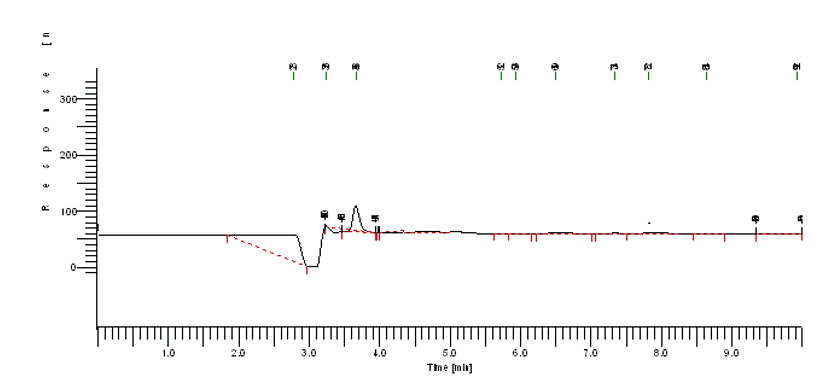
Figure 3: HPLC chromatograms of 1% (w/v) aqueous dispersion.
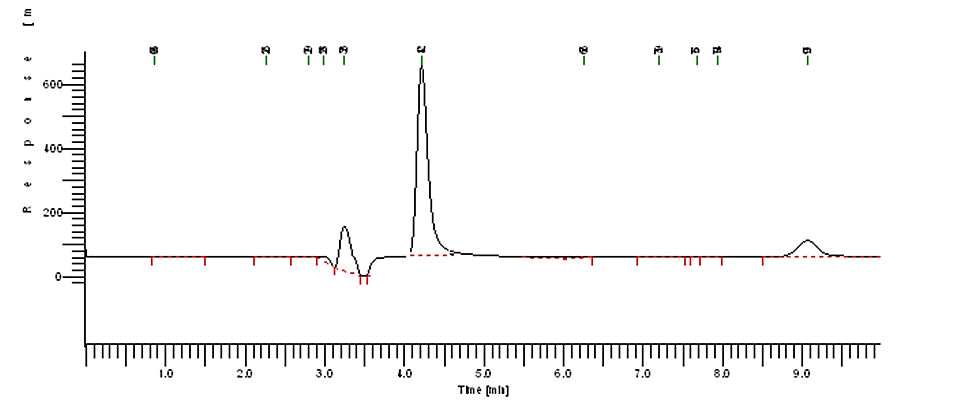
Figure 4: HPLC chromatograms of 5-FU–NPs.
Discussion
Specificity
Successful separation of 5-Fluorouracil has been done from both
plasma samples of human and rabbit and run time was not
more than 10 minutes and 4-5 minutes was retention time
of 5-FU. HPLC chromatograms analyzed 5-Fluorouracil in both
human and rabbit plasma with excellent separation under
chromatographic conditions as described above. HPLC
chromatograms of the aqueous dispersion and spiked human
and rabbit plasma have been revealed in Figures 5 and 6.
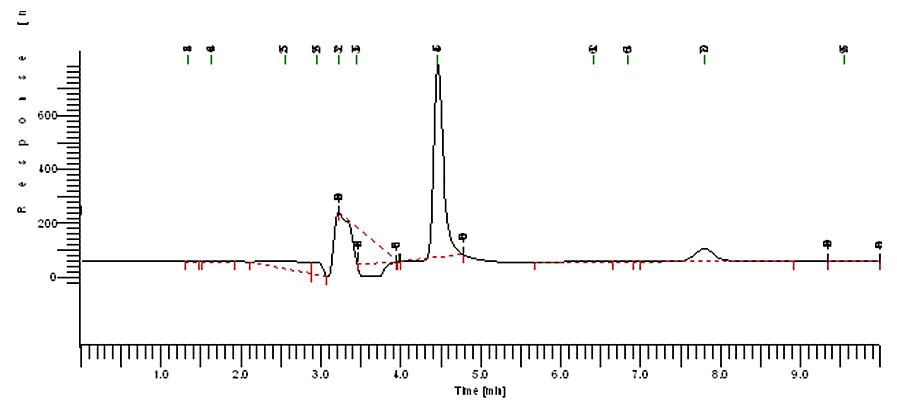
Figure 5: HPLC chromatograms of 5-FU–NPs spiked in
human plasma.
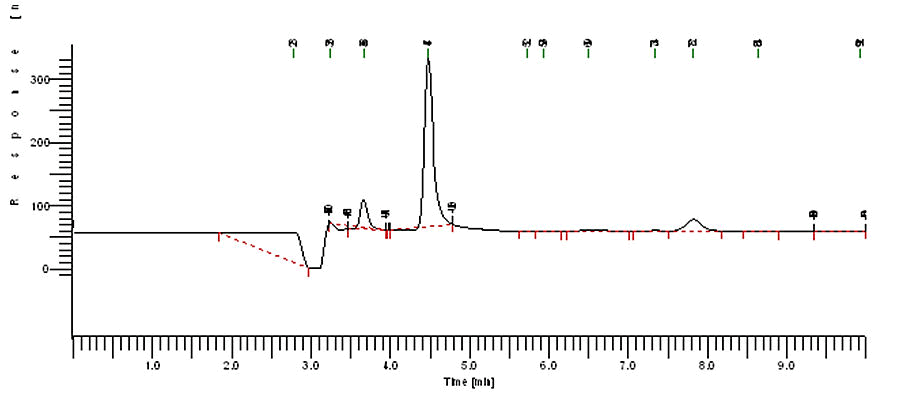
Figure 6: HPLC chromatograms of 5-FU-NPs spiked in rabbit
plasma.
Robustness
The 5% intended changes in the parameters such as the flow
rate, temperature, and composition of the mobile phase were
made and no significant difference was observed. This
indicated that the method developed is robust.
Drug Stability
Factors related to drug stability are like
• Storage environment.
• Physicochemical properties of the therapeutic agent.
• Container composition.
• Effects of another environmental stimulus (temperature,
light, humidity, sunlight, etc.).
Bench top Stability Study of 5-Fluorouracil
The stability parameters are estimated through two methods i.e. bench top stability and long term stability. In this stability
study, a freshly prepared stock solution of 5-Fluorouracil was
stored at room temperature for at least six (6 hrs) hours. The
spiked human and rabbit plasma aliquots such as low and
high quantity concentrations were injected separately as per
guidelines of bench top stability and long term stability
studies. The change in quantification at LQC and HQC as % CV
was calculated for both plasma samples concerning stability
studies, and it was observed that the % CV of both the plasma
for two concentration levels at different time intervals was
less than 3% have been mentioned in Tables 11-15.
| Concentration (ng.ml-1) |
Amount recovered (ng.ml-1) |
Area of 5-FU standard solution m.Au |
Area of Spiked 5-FU in plasma m.Au |
% Recovery |
| 100 |
96.378 |
266.774 |
257.113 |
96.8 |
| 50 |
46.31 |
138.679 |
128.445 |
92.6 |
| 40 |
39.057 |
120.297 |
117.464 |
97.6 |
| 30 |
28.591 |
99.803 |
95.116 |
95.3 |
| 20 |
19.492 |
70.323 |
68.223 |
97.4 |
| 10 |
9.727 |
55.34 |
53.831 |
97.8 |
| 5 |
4.736 |
45.98 |
43.557 |
94.7 |
| 4 |
3.832 |
39.08 |
37.445 |
95.8 |
| 3 |
2.721 |
28.56 |
25.905 |
90.7 |
| 2 |
1.939 |
17.45 |
16.923 |
96.9 |
Table 11. 5-Fluorouracil percentage recovered in rabbit spiked plasma.
| Curve code |
0 h |
2 h |
4 h |
6 h |
| LQC ng.ml-1 |
HQC ng.ml-1 |
LQC ng.ml-1 |
HQC ng.ml-1 |
LQC ng.ml-1 |
HQC ng.ml-1 |
LQC ng.ml-1 |
HQC ng.ml-1 |
| 5-FU |
20.301 |
202.67 |
19.987 |
201.65 |
20.654 |
199.87 |
19.89644 |
199.54 |
| 5-FU |
19.965 |
200.67 |
20.135 |
202.15 |
20.498 |
198.99 |
20.2323 |
202.23 |
| 5-FU |
19.876 |
201.8 |
20.476 |
200.25 |
20.365 |
201.35 |
20.12388 |
199.77 |
| Mean |
20.04 |
201.7 |
20.19 |
201.3 |
20.5 |
200.07 |
20.0842 |
200.89 |
| S.D |
0.2241 |
1.003 |
0.2508 |
0.9849 |
0.1447 |
1.1954 |
0.1714 |
1.8958 |
| N |
3 |
3 |
3 |
3 |
3 |
3 |
3 |
3 |
| %CV |
1.1181 |
0.4972 |
1.2415 |
0.4891 |
0.7054 |
0.5975 |
0.8535 |
0.9437 |
| Nominal |
20 |
200 |
20 |
200 |
20 |
200 |
20 |
200 |
| % Difference |
- |
- |
0.76 |
-0.18 |
2.29 |
-0.81 |
0.18 |
-0.41 |
Table 12: 5-Fluorouracil bench top stability in human plasma.
| 5-FU |
Week 1 |
Week 2 |
Week 3 |
Week 4 |
Mean |
S.D. |
%CV |
| LQC ng.ml-1 |
20.03 |
19.976 |
19.998 |
20.709 |
20.17 |
0.36 |
1.78 |
| HQC ng.ml-1 |
199.497 |
200.688 |
200.523 |
198.176 |
199.721 |
1.16 |
0.58 |
Table 13: 5-Fluorouracil long term stability study in human spiked plasma.
| Curve code |
0 h |
2 h |
4 h |
6 h |
| LQC ng.ml-1 |
HQC ng.ml-1 |
LQC ng.ml-1 |
HQC ng.ml-1 |
LQC ng.ml-1 |
HQC ng.ml-1 |
LQC ng.ml-1 |
HQC ng.ml-1 |
| 5-FU |
20.134 |
198.87 |
20.487 |
199.798 |
19.984 |
199.531 |
19.86745 |
198.856 |
| 5-FU |
19.978 |
197.387 |
20.665 |
202.876 |
20.561 |
201.287 |
20.376 |
198.098 |
| 5-FU |
19.798 |
201.223 |
19.916 |
199.678 |
20.376 |
201.054 |
19.769 |
199.832 |
| Mean |
19.97 |
199.16 |
20.356 |
200.784 |
20.307 |
200.624 |
20.0042 |
198.477 |
| S.D. |
0.1681 |
1.9344 |
0.3914 |
1.8127 |
0.2946 |
0.9537 |
0.3258 |
0.536 |
| N |
3 |
3 |
3 |
3 |
3 |
3 |
3 |
2 |
| %CV |
0.842 |
0.9713 |
1.9225 |
0.9028 |
1.4508 |
0.4754 |
1.6285 |
0.27 |
| Nominal |
20 |
200 |
20 |
200 |
20 |
200 |
20 |
200 |
| %Difference |
- |
- |
1.93 |
0.82 |
1.69 |
0.74 |
0.17 |
-0.34 |
Table 14: 5-Fluorouracil bench top stability in rabbit plasma.
| 5-FU |
Amount |
Week 1 |
Week 2 |
Week 3 |
Week 4 |
Mean |
S.D. |
%CV |
| LQC |
ng.ml-1 |
19.47 |
20.054 |
19.376 |
19.807 |
19.67675 |
0.31 |
1.59 |
| HQC |
ng.ml-1 |
198.107 |
199.43 |
199.87 |
198.69 |
199.0243 |
0.78 |
0.39 |
Table 15: 5-Fluorouracil long term stability in rabbit spiked plasma.
Conclusion
The precise and accurate RPH-HPLC method has been
developed and validated which was found successfully
applicable for quantification of 5-FU in spiked human and
rabbit plasma, aqueous, and dispersion phase. The developed
method can be employed for pharmacokinetic and
Therapeutic Drug Monitoring (TDM) purposes. It can also be employed in pharmaceutical industries for quality control
assurance between and within batches of pharmaceutical
products or formulations as it is a simple, reliable,
reproducible, and stable method.
Acknowledgement
The author thank you faculty of pharmacy and alternative
medicines, the Islamia University of Bahawalpur, Pakistan,
during this study.
Conflicts of Interest
There is no conflict of interest among the authors.
References
- Xu X, Ho W, Zhang X, Bertrand N, Farokhzad O (2015) Cancer nano medicine: from targeted delivery to combination therapy. Trends Mol Med. 2015;21(4):223–232.
[Crossref][Google Scholar][Indexed]
- WHO (2018) Cancer. World Health Organization. Africa.
- Qiu Y, Park K (2001) Environment sensitive nanoparticles for drug delivery. Adv Drug Deliv Rev. 53(4):321-339.
[Crossref][Google Scholar][Indexed]
- Siegel RL, Miller KD, Jemal A (2022) Cancer statistics. CA Cancer J Clin. 72(1):7-33.
[Crossref][Google Scholar][Indexed]
- Satta F, Franchi F (1997) Beyond 5-fluorouracil monochemotherapy in colorectal cancer it is time. J Chemother. 9(6):431-435.
[Crossref][Google Scholar][Indexed]
- Hans ML, Lowman AM (2010) Biodegradable nanoparticles for drug delivery and targeting. Curr Opin Solid State Mater Sci. 6(6): 319-327.
[Crossref][Google Scholar][Indexed]
- Olukman M, Sanlı O, Solak EK (2012) Release of Anticancer Drug 5-Fluorouracil from Different Ionically Crosslinked Alginate Beads. J Biomater Nanobiotechnol. 3(1):469-479.
[Crossref][Google Scholar]
- Patel MN, Lakkadwala S, Majrad MS, Injeti ER, Gollmer SM, et al. (2014) Characterization and evaluation of 5-fluorouracil-loaded solid lipid nanoparticles prepared via a temperature-modulated solidification technique. AAPS Pharm SciTech. 15(6):1498-1508.
[Crossref][Google Scholar][Indexed]
- Boisdron-Celle M, Menei P, Benoit JP, et al. (1995) Preparation and characterization of 5-fluorouracil loaded microparticles as biodegradable anticancer drug carriers. J Pharm Pharmacol. 47(2):108-114.
[Crossref][Google Scholar][Indexed]
- Kim YH, Shin SW, Kim BS, Kim JH, Kim JG, et al. (1999) Paclitaxel, 5‐fluorouracil, and cisplatin combination chemotherapy for the treatment of advanced gastric carcinoma. Cancer. 85(2):295-301.
[Crossref][Google Scholar][Indexed]
- Li J, RaoJ, Pu K (2018) Recent progress on semiconducting polymer nanoparticles for molecular imaging and cancer phototherapy. Biomaterials. 155(11):217–235.
[Crossref][Google Scholar][Indexed]
- Dash M, Chiellini F, Ottenbrite RM, Chiellini E (2011) Chitosan A versatile semi synthetic polymer in biomedical applications. Prog Polym Sci. 36(8):981–1014.
[Crossref][Google Scholar][Indexed]
- Riegger BR, Kowalski R, Hilfert L,Tovar GEM, Bach M (2018) Chitosan nanoparticles via high pressure homogenization-assisted miniemulsion crosslinking for mixed-matrix membrane adsorbers. Carbohydr. Polym. 201:172–181.
[Crossref][Google Scholar][Indexed]
- Monteiro OAC, Airoldi C (1999) Some studies of crosslinking chitosan–glutaraldehyde interaction in a homogeneous system. Int J Biol Macromol. 26(2-3):119–128.
[Crossref][Google Scholar][Indexed]
- Islam N, Wang H, Maqbool F, Ferro V (2019) In Vitro Enzymatic Digestibility of Glutaraldehyde-Crosslinked Chitosan Nanoparticles in Lysozyme Solution and Their Applicability in Pulmonary Drug Delivery. Molecules. 24(7):1271.
[Crossref][Google Scholar][Indexed]
- Ciccolini J (2004) A simple and rapid High Performance Liquid Chromatographic (HPLC) method for 5-Fuorouracil (5-FU) assay in plasma and possible detection of patients with impaired Dihydropyrimidine Dehydrogenase (DPD) activity. J Clin Pharm. 29(4):307-315.
[Crossref][Google Scholar][Indexed]
- Gulbake A, Jain A, Jain SK (2016) Insight to drug delivery aspects for colorectal cancer. World J Gastroenterol. 22(2):582–599.
[Crossref][Google Scholar][Indexed]
- RUdofot O (2015) Cytotoxicity of 5-fuorouracil loaded pH-sensitive liposomal nanoparticles in colorectal cancer cell lines. Integr Cancer Sci Ter. 2(5):245-252.
[Crossref][Google Scholar][Indexed]
- Latchman J, Guastella A, Tofhagen C (2014) 5-Fluorouracil toxicity and dihydropyrimidine dehydrogenase enzyme: implications for practice. Clin J Oncol Nurs. 18(5):581-585.
[Crossref][Google Scholar][Indexed]
- Garcia-Pinel B (2019) Lipid based nanoparticles: application and recent advances in cancer treatment. Nanomaterials (Basel). 9(2):1-23.
[Crossref][Google Scholar][Indexed]
Citation: Sethi A, Ahmad M, Ahmad I, Sultana S (2022) Development and Optimization of RP-HPLC Method for analysis of 5-FU
in Human and Rabbit Plasma Samples: Identification and Quantification. Am J Adv Drug Deliv. 10:31.
Copyright: © 2022 Sethi A, et al. This is an open-access article distributed under the terms of the Creative Commons
Attribution License, which permits unrestricted use, distribution, and reproduction in any medium, provided the original
author and source are credited.







